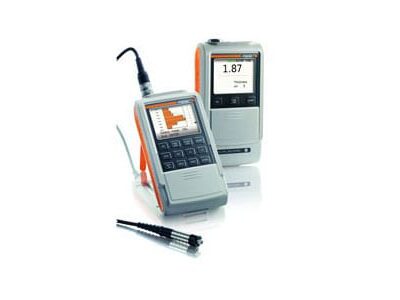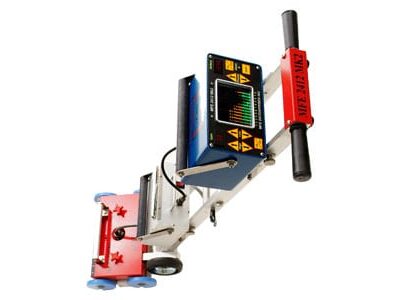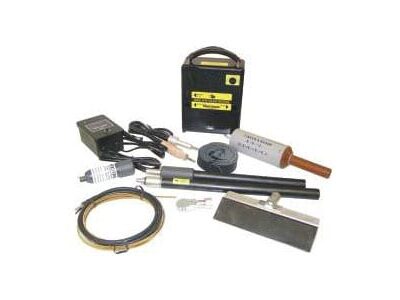
Olympus 45 MG

Overview
In its basic configuration, the 45MG is a simple and straightforward gauge that requires minimal operator training to tackle the most common thickness gauging applications.
However, the 45MG can become significantly more advanced and take on applications well beyond that of a typical entry-level gauge with additional optional software options and transducers.
Furthermore, most options are available individually at the time of purchase or can be added in the future as your needs change.
- Compatible with a full line of Olympus dual element transducers for thickness measurements on
internally corroded metals. - Min./Max. mode.
- Two Alarm modes.
- Differential mode.
- Time-based B-scan.
- Reduction Rate.
- Gain Adjust (standard, high, and low).
- Password instrument lock.
The 45MG offers five code-activated software options that make it one of the most versatile thickness gauges in the industry. From a simple corrosion gauge to a multi-purpose precision thickness gauge with only a few keystrokes for use in many applications.
Features
- Simple keypad for right-hand/left-hand operation.
- Easy operator interface with direct access to most functions.
- Internal and removable MicroSD memory card storage.
- USB communication port.
- Optional alphanumeric data logger with 475,000 thickness readings or 20,000 waveforms.
- Default/Custom single-element transducer setups (optional).
- Password-protected instrument lock.
- Color transflective QVGA display with indoor and outdoor color settings for superior clarity.
Specifications
| General |
| Dual element transducer measurement mode | Time interval from a precision delay after the excitation pulse to the first echo. |
| Echo-to-Echo (Optional) | The time interval between two successive back-wall echoes to eliminate paint or coating thickness. |
| THRU-COAT® measurement (optional) | Measurement of true metal and coating thicknesses with a single back-wall echo (with D7906-SM, D7906-RM, and D7908 transducers). |
| Single element transducer measurement modes (optional) | Mode 1: Time interval between the excitation pulse and the first back-wall echo Mode 2: Time interval between the delay line echo and the first back-wall echo (with delay or immersion transducers) Mode 3: Time interval between successive back-wall echoes following the first interface echo after the excitation pulse (with delay line or immersion transducers). |
| Thickness range | 0.080 mm to 635 mm (0.003 in. to 25.0 in.) depending on the material, transducer, surface conditions, temperature, and selected configuration (Full range requires a single element option). |
| Material velocity range | |
| Resolution (selectable) | Low: 0.1 mm (0.01 in.). |
| Standard | 0.01 mm (0.001 in.). |
| Single Element option | 0.001 mm (0.0001 in.). |
| Transducer frequency range | Standard: 2.25 MHz to 30 MHz (-3 dB) High Penetration (Single Element option): 0.50 MHz to 30 MHz (-3 dB). |
| Operating temperature range | -10 °C to 50 °C (14 °F to 122 °F). |
| Keypad | It sealed color-coded keypad with tactile and audible feedback. |
| Case | Impact-resistant and water-resistant case with sealed connectors. Designed for IP67. |
| Dimensions (W x H x D) | Overall: 91.1 mm x 162 mm x 41.1 mm (3.59 in. x 6.38 in. x 1.62 in). |
| Weight | 430.9 g (0.95 lb). |
| Power Supply | 3 AA batteries/USB power supply. |
| Battery life operating time | 3 AA alkaline: 20 to 21 hours 3 AA NiMH: 22 to 23 hours AA Lithium: 35 to 36 hours. |
| Standards | Designed for EN15317. |
| Color transflective QVGA display | Liquid crystal display, display area 54.61 mm x 41.15 mm (2.15 in. x 1.62 in.) |
| Rectification | Full wave, RF, half-wave positive, or half-wave negative (Waveform option). |
| USB | 2.0 client |
| Memory card | Maximum capacity: 2 GB removable MicroSD memory card. |
You must be logged in to post a review.





Reviews
There are no reviews yet.